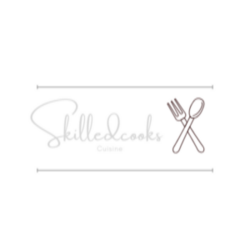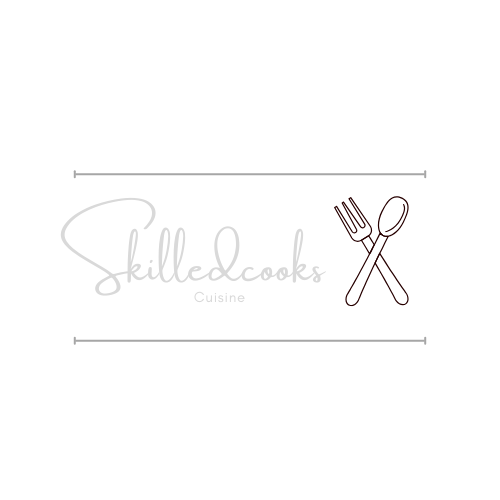Biscoff cheesecake, a delightful dessert that combines the unique taste of Lotus Biscoff cookies with the creamy richness of cheesecake, has become a favorite among dessert lovers. This article provides a comprehensive guide to creating your own Biscoff cheesecake, ensuring a delicious outcome every time.
Introduction to Biscoff Cheesecake Recipe
Lotus Biscoff, known for its distinctive caramelized flavor, is a type of spiced shortcrust biscuit that originated in Belgium. The cookies have gained widespread popularity, not just for their taste but also for their versatility in various dessert recipes, particularly in cheesecakes.
Ingredients and Equipment
Creating the perfect Biscoff cheesecake requires specific ingredients and kitchen tools. Here’s what you’ll need:
Ingredients:
The ingredients for a Biscoff cheesecake are simple yet specific, ensuring that the unique flavor of the Biscoff cookies shines through:
- Biscoff Cookies: The star of the recipe, these caramelized biscuits provide the distinct Biscoff flavor and form the base of the crust.
- Unsalted Butter: Used to bind the cookie crumbs for the crust and add richness.
- Cream Cheese: The main component of the cheesecake filling, providing a creamy and smooth texture. Full-fat cream cheese is recommended for the best results.
- Brown Sugar: Adds a deep, caramel-like sweetness that complements the Biscoff flavor.
-
Granulated Sugar: Provides additional sweetness to the cheesecake.
- Sour Cream: Enhances the creaminess and adds a slight tang to balance the sweetness.
- Biscoff Cookie Butter: This spreadable form of Biscoff cookies boosts the Biscoff flavor in the cheesecake filling.
- Vanilla Extract: Adds depth and aroma to the cheesecake.
- Eggs: Essential for binding the filling and giving the cheesecake its structure.
Equipment:
The right tools can make the process of baking a cheesecake much easier and more enjoyable:
- Food Processor or Rolling Pin: For crushing the Biscoff cookies into fine crumbs.
- Electric Mixer: A hand mixer or stand mixer is crucial for blending the cheesecake ingredients smoothly.
- Springform Pan: A 9-inch springform pan is ideal for easy removal of the cheesecake once it’s baked.
-
Large Roasting Pan: Needed for the water bath, which helps cook the cheesecake gently and evenly, preventing cracks.
- Mixing Bowls: Various sizes for mixing the crust and filling.
- Measuring Cups and Spoons: For accurately measuring ingredients.
- Rubber Spatula: To fold and mix ingredients gently and scrape the sides of the bowl.
- Aluminum Foil: To wrap the bottom of the springform pan during the water bath baking.
For those interested in exploring other cheesecake varieties, check out our Chocolate Cheesecake Recipe.
Biscoff Cookie Crust Preparation
The foundation of any great cheesecake is its crust, and for a Biscoff cheesecake, the crust is a crucial element that sets the stage for the creamy filling. Here’s how to prepare the perfect Biscoff cookie crust:
-
Crush the Cookies: Begin by taking about 250 grams of Lotus Biscoff cookies. Crush them into fine crumbs. This can be done using a food processor for a quick and even result. If you don’t have a food processor, placing the cookies in a sealed bag and rolling them with a rolling pin works just as well.
- Mix with Melted Butter: Melt about 100 grams of unsalted butter. Combine the melted butter with the Biscoff crumbs in a bowl. The butter acts as a binding agent, ensuring that the crumbs stick together and form a solid base once baked.
-
Press onto the Pan: Transfer the buttery crumbs to a 9-inch springform pan. Use the back of a spoon or the bottom of a measuring cup to press the crumbs firmly and evenly across the bottom of the pan and slightly up the sides. This creates a sturdy base for your cheesecake.
- Bake the Crust: Preheat your oven to 325°F (163°C). Bake the crust for about 10 minutes, or until it is slightly golden and set. This pre-baking step helps the crust to firm up and hold together when the cheesecake filling is added.
The Biscoff cookie crust should have a slightly crunchy texture and a deep caramelized flavor, complementing the creamy cheesecake filling that follows. This crust not only adds a delicious flavor but also provides a delightful contrast in texture to the smooth cheesecake.
Biscoff Cheesecake Recipe Batter Preparation
The heart of the Biscoff cheesecake lies in its batter – a creamy, smooth mixture that perfectly balances the spiced, caramel flavor of the Biscoff cookies. Preparing this batter requires precision and care to ensure the cheesecake’s texture and taste are just right.
- Begin with Cream Cheese: Start by taking 600 grams of full-fat cream cheese at room temperature. The cream cheese should be soft to ensure a smooth batter. Use an electric mixer to beat the cream cheese on a medium setting until it becomes creamy and free of lumps. This step is crucial for achieving the silky texture that cheesecakes are known for.
-
Incorporate Sugars: Gradually add 150 grams of granulated sugar and 50 grams of brown sugar to the cream cheese. The granulated sugar provides sweetness, while the brown sugar complements the Biscoff’s caramel notes. Continue to mix until the sugars are fully incorporated and the mixture is smooth.
- Add Biscoff Cookie Butter: Introduce 200 grams of Biscoff cookie butter into the mixture. This not only enhances the Biscoff flavor but also contributes to the creamy texture of the batter. Mix until the cookie butter is evenly distributed throughout the batter.
- Incorporate Wet Ingredients: Add 1 teaspoon of vanilla extract for depth of flavor. Then, mix in 120 grams of sour cream, which adds a slight tanginess and contributes to the batter’s rich texture. Ensure these ingredients are fully integrated into the batter.
-
Eggs – The Final Touch: Finally, add 4 large eggs, one at a time, mixing well after each addition. The eggs should be at room temperature to blend seamlessly into the batter. Be careful not to overmix at this stage; mix just until each egg is incorporated. Overmixing can incorporate too much air, leading to cracks in the cheesecake during baking.
The result should be a smooth, homogenous batter that’s ready to be poured over the pre-baked Biscoff crust. The batter’s consistency plays a pivotal role in achieving the desired creamy texture of the cheesecake, making each step in this process vital.Learn more about Biscoff cookies
Baking the Cheesecake
Baking the Biscoff cheesecake is a delicate process that requires attention to detail to achieve the perfect texture and prevent cracking. Here’s how to bake your cheesecake to perfection:
- Preheat the Oven: Begin by preheating your oven to 325°F (163°C). Consistent temperature is key for even baking.
-
Prepare for Water Bath: Wrap the bottom and sides of your springform pan (with the Biscoff crust and batter) in aluminum foil. This prevents water from seeping into the cheesecake during the baking process. Place the wrapped pan in a large roasting pan.
- Water Bath Setup: Pour hot water into the roasting pan until it reaches about halfway up the sides of the springform pan. The water bath, or bain-marie, helps to regulate the oven’s heat and ensures gentle cooking. This method is crucial for a cheesecake as it minimizes the risk of cracks and ensures a smooth, creamy texture.
-
Bake the Cheesecake: Carefully place the roasting pan in the oven. Bake the cheesecake for about 60 to 70 minutes. The key indicator of doneness is a slight jiggle in the center of the cheesecake while the edges are set. Avoid opening the oven door frequently, as temperature fluctuations can cause the cheesecake to crack.
- Cooling Process: Once baked, turn off the oven and let the cheesecake sit inside with the door slightly ajar for about an hour. This gradual cooling helps prevent the top from cracking. Afterward, remove the cheesecake from the water bath and let it cool to room temperature on a wire rack.
- Refrigerate: Once cooled, refrigerate the cheesecake for at least 6 hours, preferably overnight. This step is essential for the cheesecake to set properly and develop its flavors.
For more insights into perfect cheesecake baking, see our article on Is it Better to Bake a Cheesecake or Not.
Cooling and Decorating
After baking, the cheesecake needs to be cooled and decorated:
- Turn off the oven and leave the cheesecake inside for an hour.
- Chill in the fridge for at least 6 hours.
- Decorate with melted Biscoff spread and cookie crumbs.
Storage and Serving Suggestions
Proper storage and serving of Biscoff cheesecake recipe are essential for maintaining its flavor and texture. Here are some tips to ensure your cheesecake stays delicious from the first slice to the last:
Storage:
- Refrigeration: Once the cheesecake has completely cooled to room temperature, cover it with plastic wrap or aluminum foil. Store it in the refrigerator for up to 4-5 days. The cold environment helps to keep the cheesecake firm and preserves its creamy texture.
- Freezing: For longer storage, Biscoff cheesecake can be frozen. Wrap the cheesecake (either whole or in slices) tightly in plastic wrap, followed by a layer of aluminum foil. It can be stored in the freezer for up to 2 months. When ready to eat, thaw the cheesecake in the refrigerator overnight.
Serving:
- Slicing: For clean and precise slices, use a sharp, thin-bladed knife. Dip the knife in hot water and wipe it dry between each cut. This technique ensures smooth, even slices without dragging the filling.
- Room Temperature: Before serving, it’s best to let the cheesecake sit at room temperature for about 10-15 minutes. This slight warming enhances the cheesecake’s flavor and texture, making it creamier.
- Garnishing: Enhance your Biscoff cheesecake with a dollop of whipped cream, a drizzle of caramel sauce, or a sprinkle of crushed Biscoff cookies for added texture and flavor. Fresh berries can also add a refreshing contrast to the rich cheesecake.
FAQs about Biscoff Cheesecake Recipe
-
Can I make a no-bake version of this cheesecake?
Yes, there are no-bake variations of Biscoff cheesecake. For a no-bake option, explore our No-Bake Mini Cheesecake Recipe.
-
What Can I Use If I Don’t Have a Springform Pan?
If you don’t have a springform pan, a deep pie dish can be used as an alternative. However, serving the cheesecake might be slightly more challenging. Lining the dish with parchment paper can help in removing the cheesecake more easily.
-
How Do I Prevent the Cheesecake from Cracking?
To prevent your cheesecake from cracking:
- Avoid overmixing the batter, as this can incorporate too much air and lead to cracks.
- Use a water bath while baking, as it helps in even heat distribution and minimizes surface cracking.
- Let the cheesecake cool gradually in the oven with the door ajar to avoid sudden temperature changes that can cause cracks.
Can I Freeze Biscoff Cheesecake?
Yes, Biscoff cheesecake recipe can be frozen. Wrap it tightly in plastic wrap and then in aluminum foil. It can be stored in the freezer for up to 2 months. Thaw in the refrigerator overnight before serving.
Is It Necessary to Use Full-Fat Cream Cheese?
For the best texture and flavor, it is recommended to use full-fat cream cheese. Low-fat versions can make the cheesecake less creamy and more prone to texture issues.
Conclusion of Biscoff Cheesecake Recipe
Biscoff cheesecake is not just a dessert; it’s an experience of rich, creamy, and caramelized flavors that blend perfectly. Whether you’re a seasoned baker or new to the kitchen, this guide will help you create a dessert that’s sure to impress.



